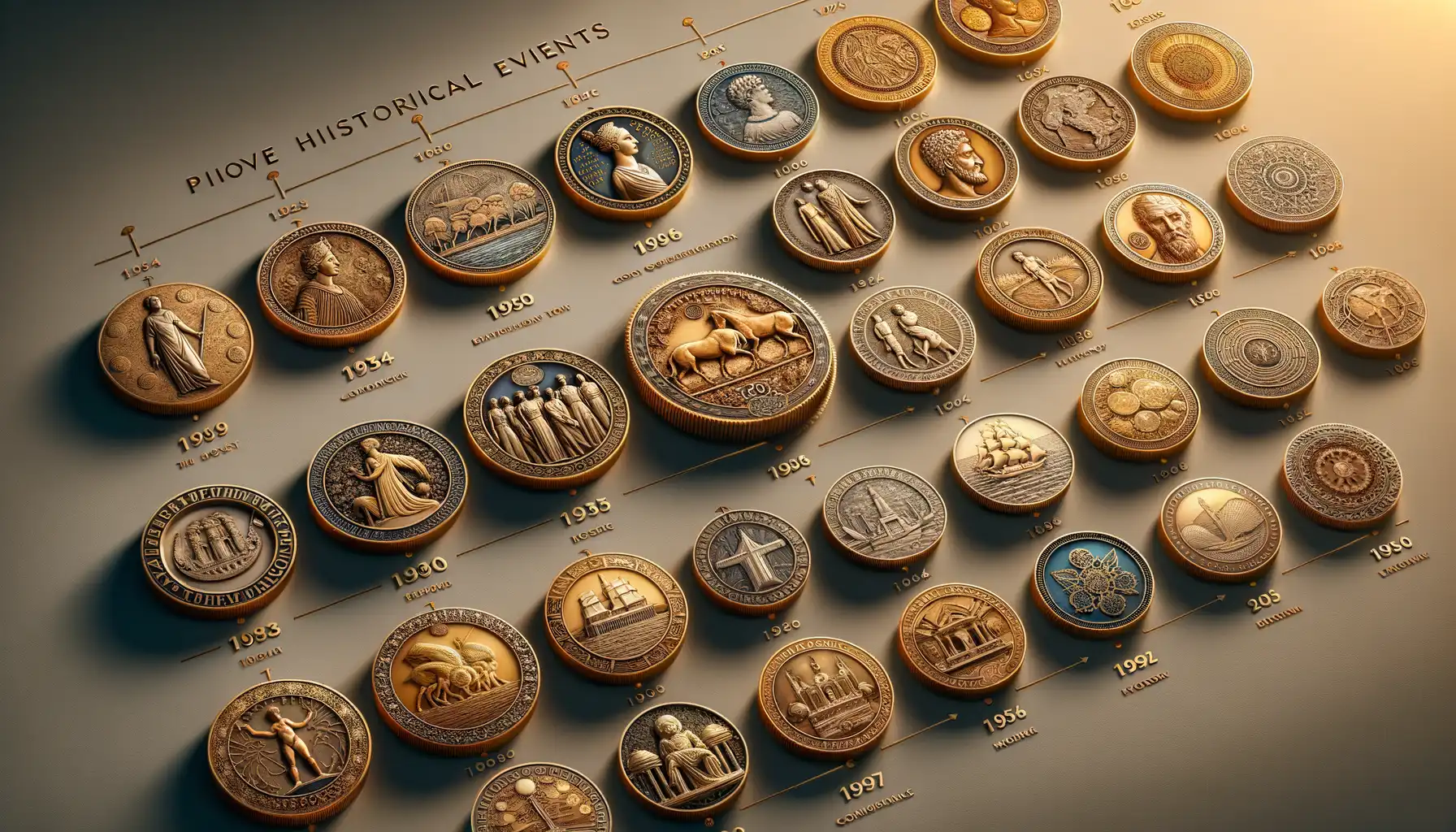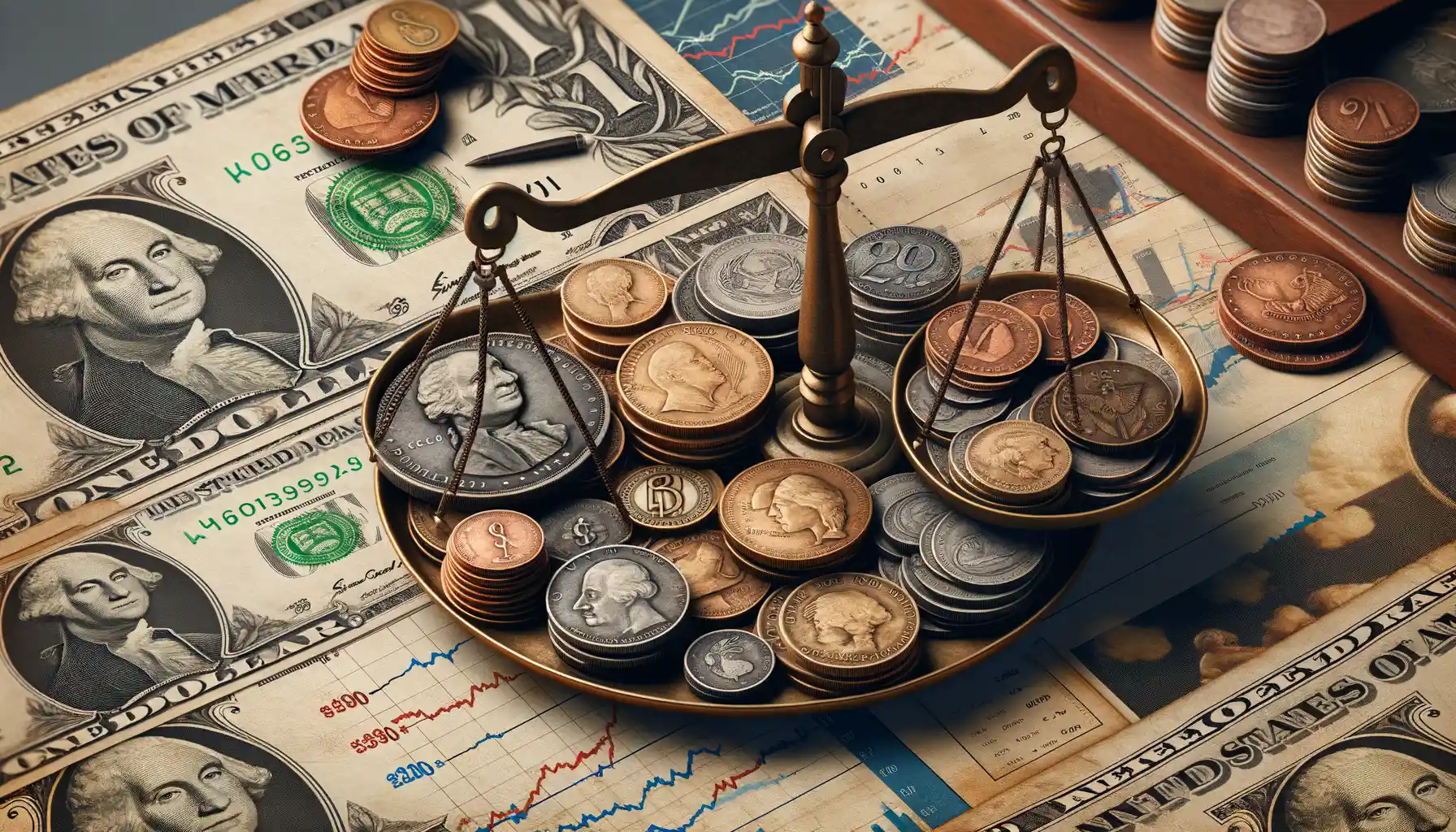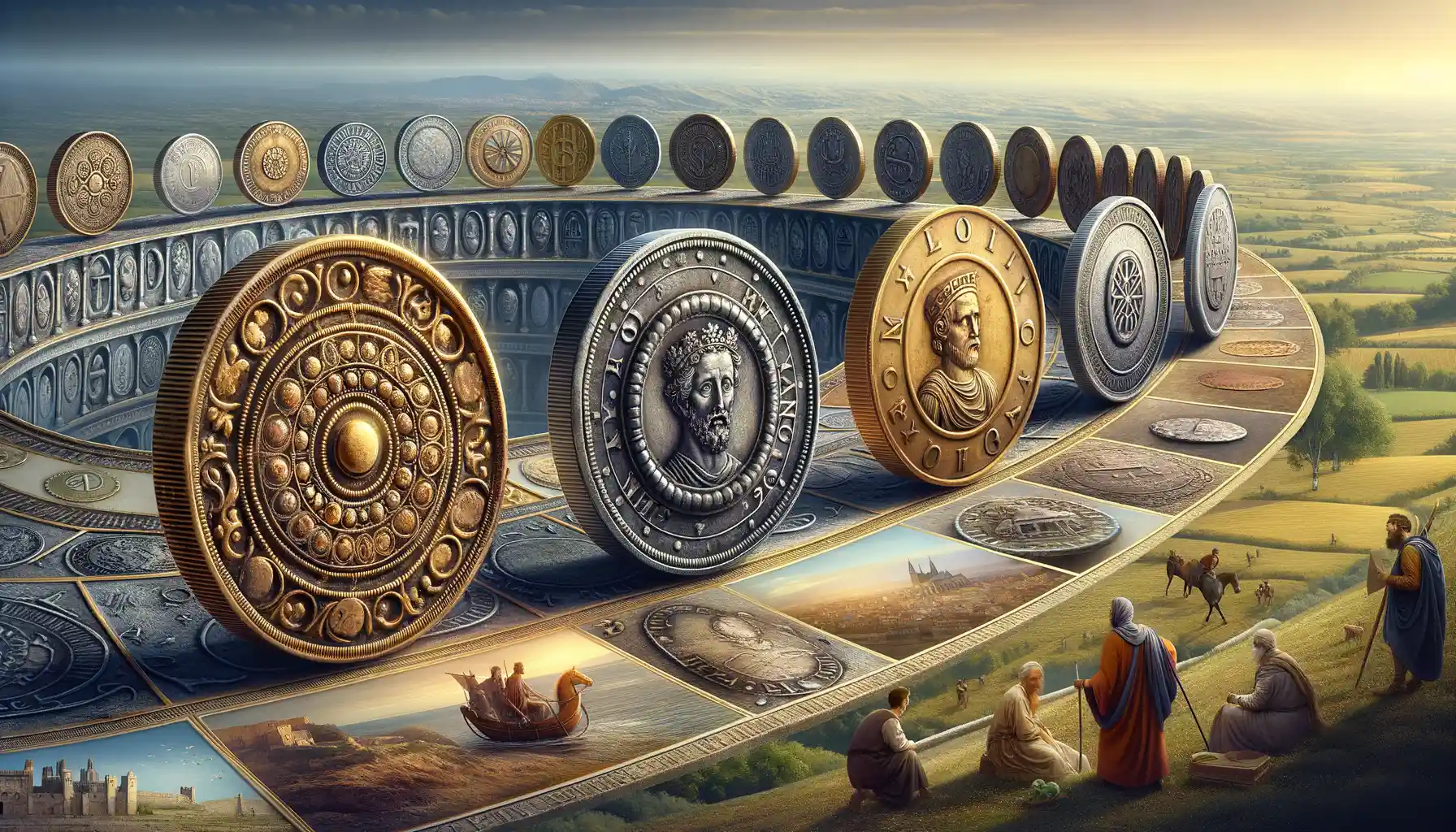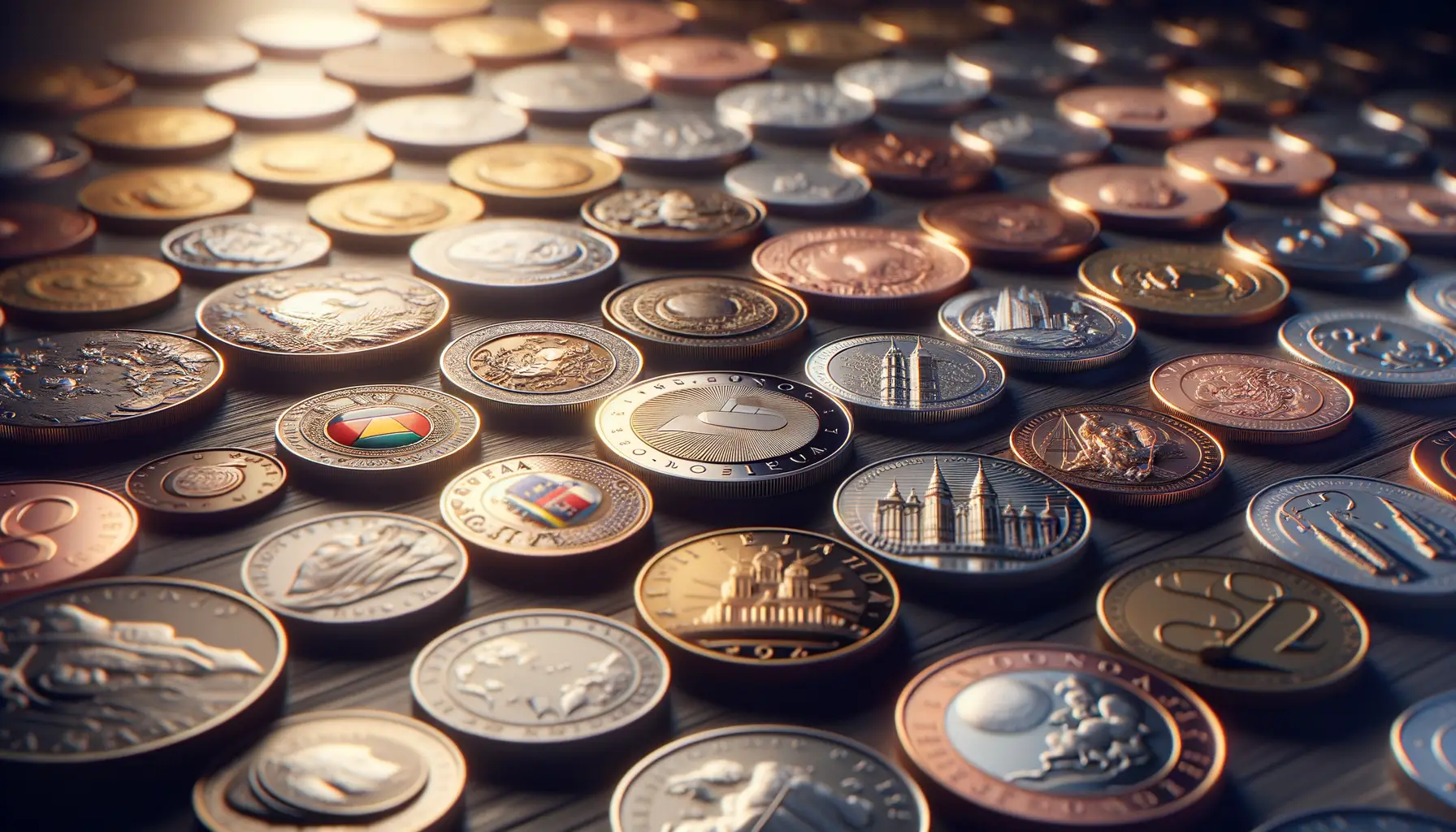Historical Background of Coinage
Coins: A Window to Ancient Societies
The history of coinage is like peeling back layers of time—it reveals stories of trade, power, and culture. Picture ancient merchants haggling in bustling markets, their hands exchanging not goods, but round pieces of metal that symbolized trust and value. The earliest coins appeared around 600 BCE in the ancient kingdom of Lydia (modern-day Turkey), crafted from an alloy of gold and silver called electrum. These weren’t just currency; they were statements of wealth and innovation.
Fast forward, and we see the Greeks transforming coins into miniature works of art, engraving gods, athletes, and mythical creatures onto them. Rome took it further, stamping the faces of emperors on their coins—a daily reminder of who held power. Coins weren’t just tools; they carried political propaganda wherever they traveled.
- China: Where early cast coins, shaped like spades or knives, reflected a different yet fascinating approach to money.
- India: Where punched-mark coins told stories of early kingdoms through their symbols.
From humble beginnings to powerful symbols, each coin is a fragment of human ambition and creativity, whispering tales of the past into our hands today.
How Major Historical Events Shaped Coin Design

The Battle Cries Etched in Metal
Coins don’t just jingle in our pockets; they carry the echoes of revolutions, victories, and turning points. Take the French Revolution, for instance. When liberty surged through Europe, France’s coins ditched royal faces and adorned themselves with symbols of freedom—like the famed Liberty cap—a small metal rebellion against centuries of monarchy.
Or consider World War II. During resource shortages, nations scrambled to redesign their coins. The U.S., for example, swapped copper pennies for zinc-coated steel in 1943—a tactical decision reflecting the war effort. It was more than thriftiness; it was survival stamped into every coin.
- The Roman Empire: Their coins broadcasted victories, emperors, and gods to remote corners of the realm, functioning as both currency and propaganda.
- The American Civil War: Confederate states minted their own coins in an audacious bid for financial independence from the Union.
When Economic Turmoil Redefined the Mint
Ever heard of hyperinflation destroying your wallet’s worth? In 1920s Germany, massive inflation rendered traditional coins impractical. Enter the emergency coinage: crudely made, sometimes crafted from materials like aluminum or porcelain. These weren’t just economic stopgaps—they were visceral reminders of a nation under pressure.
The Great Depression had its own spin. Coins from the era bore simpler designs, often reflecting austerity. Symbols of grandeur disappeared, replaced by minimalist profiles—mirroring the sacrifices ordinary people lived day-to-day.
Coins don’t just hold value; they distill history into palm-sized testaments of human resilience and creativity.
Economic Impacts of Historical Events on Currency

When History Shakes the Money Tree
Imagine this: the stock market crashes in 1929, and suddenly the world is drowning in uncertainty. That’s not just a chapter in a history book—it’s a moment that rocked currencies globally, dictating their values like leaves tossed in a storm. Economic turmoil isn’t just numbers on a chart; it seeps into the coins in your pocket, too.
Take wartime economies, for example. During World War II, nations rationed precious metals for weapons and machinery. This forced governments to innovate with cheaper alternatives—like the U.S. nickel being replaced by a mix of copper and silver. What was once a sturdy metal coin now felt lighter, almost symbolic of the sacrifices people made.
- Revolutions? They don’t just overthrow governments—they often topple monetary systems too. Think of the chaotic introduction of paper money during the French Revolution or the hyperinflation that followed in its wake.
- Eras of prosperity, though, offer a different tune. The California Gold Rush flooded markets with shiny new coins, reshaping economies and inspiring dreams of wealth.
These events remind us that currencies are not lifeless—they breathe with the rhythm of human triumphs and struggles, forever adapting to the tides of history.
Cultural and Symbolic Importance of Coins Through History

Coins as Carriers of Identity and Power
Imagine holding a coin from centuries past—it’s more than just metal; it’s a whisper from another world. Throughout history, coins have been the storytellers of civilizations. They’ve carried the faces of rulers, like the proud profile of Emperor Augustus, forging a link between power and currency. A monarch’s visage wasn’t just decoration—it was a declaration of authority, a symbol of control that jingled in the pockets of everyday people.
Coins also served as identity cards for whole cultures. Ancient Greek coins often featured gods like Athena or Apollo, blending religion and daily life. Meanwhile, medieval European coins bore intricate crosses, subtly reinforcing the church’s dominance. Even the smallest details—a wreath, a lion, a sailing ship—told tales of a kingdom’s values, achievements, or ambitions.
- Commemorative coins: Markers of pivotal moments like wars, treaties, or royal coronations.
- Symbolic design choices: The U.S. “buffalo nickel” captured the spirit of the American frontier.
The next time you see a coin? Think of it as more than spare change—it’s a tangible piece of someone’s hopes, beliefs, and legacy.
Modern Reflections of History in Coinage

Echoes of History in Modern Coins
Take a close look at the coins in your pocket or purse. Do you see it? That glimmer of the past peeking through the polished surface? Modern coins aren’t just currency—they are tiny, portable storytellers, carrying echoes of history and culture wherever they go.
Today, governments around the world use coin designs to commemorate milestones, celebrate heritage, and honor influential figures from the past. Consider the iconic U.S. State Quarters series: 50 unique designs that bring local history to life, from the revolutionary battles of Massachusetts to California’s majestic Yosemite National Park. Or take the euro—its shared currency features unifying symbols on one side but leaves space for each nation to highlight its own legacy. What better way to let tradition shine?
- Anniversary coins: Marking pivotal events like the Moon Landing or D-Day landings.
- Cultural motifs: Think of Canada’s loonie, proudly emblazoned with a loon, tying nature to national identity.
Even cryptocurrency has joined the storytelling game, naming coins like “Bitcoin Gold” to evoke trust and historical value. Isn’t it fascinating how our past keeps leaving its fingerprints on our future wealth?
